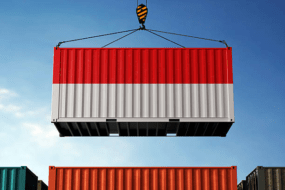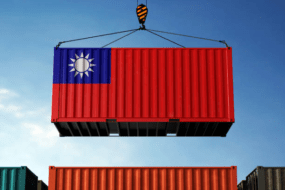- Home
- Trade News
- Thailand: Balancing Rice Price ...

Thailand, known as the world’s second-largest exporter of rice, is currently facing a unique conundrum that has global implications. While the nation is benefitting from India’s rice export ban, it is also grappling with the challenge of conserving water resources due to a severe shortage. In this blog, we delve into Thailand’s efforts to navigate this complex situation.
Balancing Act: Rice Prices and Water Conservation
The Thai government, led by Commerce Minister Jurin Laksanawisit, recognizes the importance of keeping domestic rice prices stable. He reassured the public that the government is committed to preventing rice prices from soaring too high. This measure is essential to maintain economic stability and ensure affordable food for its citizens. Jurin also expressed confidence that inflation would remain at bay, despite the challenges posed by the current situation.
One of the pressing issues is the record-high paddy prices, currently standing at 12,000 baht ($344.43) per metric ton. This surge in prices can be attributed to various factors, including the anticipation of decreased paddy output, which is expected to decline by an annual rate of 5.6% to 32.35 million metric tons this year. Such a significant drop in production can create uncertainties in the domestic market and potentially lead to higher rice prices.
Thailand’s Water Woes
As Thailand grapples with managing rice prices, it also faces a pressing concern related to water resources. The nation is currently experiencing a drought, marked by significantly lower rainfall levels, raising alarm bells about water shortages. The Office of the National Water Resources (ONWR) has issued a call for action, urging farmers to shift to crops that require less water and can be harvested quickly.
Surasri Kidtimonton, the secretary-general of the ONWR, emphasized the importance of prioritizing water for consumption and the cultivation of perennial crops over annual crops like rice. The rationale behind this shift lies in the stark contrast in water requirements between different crops. For every kilogram of rough rice grown, an average of 2,500 liters of water is needed. In contrast, alternative crops like millets require significantly less water, ranging from 650 to 1,200 liters for the same amount harvested.
Global Implications
Thailand’s decision to encourage farmers to plant water-efficient crops could potentially have far-reaching effects on the global rice market. As one of the world’s major rice exporters, any significant reduction in Thai rice production could lead to tighter global rice supplies. This situation may exacerbate the challenges already created by India’s export ban on non-basmati white rice, which was implemented to ensure adequate availability in its domestic market.
Thailand’s current predicament is a testament to the intricate balance required in managing both economic stability and environmental sustainability. While the nation seeks to control domestic rice prices, it also recognizes the urgency of conserving its precious water resources. The global community will be closely watching how Thailand navigates these challenges and the potential impacts on the world’s rice markets in the coming months. Balancing the needs of the present with the sustainability of the future remains a complex and vital task for nations around the world.
To learn more about how Thailand is impacted by India’s rice export ban, please click here.
The most trustable and reliable source for Trade Data.
TradeData.Pro is a reliable and trustworthy source of trade data proudly made in Singapore, a country known for its stable political climate and trade-driven economy. Presented by Commodities Intelligence Centre, a government-linked company and a joint venture of Zall Smartcom, SGX, and GeTS, TradeData.Pro has received positive feedback from the market since its launch in 2018 for its extensive coverage, affordability, and fast response. The platform has been awarded the Singapore Quality Class in 2020 and the Stevie Award Gold in 2021.
Traditionally, obtaining critical data to reveal trends, identify market opportunities, track competitors, buyers, and suppliers, and better understand the potential of the supply chain has been a challenge. However, the detailed shipment information that is part of government import and export filing requirements does exist and forms the core of global trade. TradeData.Pro has gathered and packaged this information as business intelligence, which helps companies understand the flow of goods across borders and features the world’s largest searchable trade database. TradeData.Pro reviews, standardizes, and cleans data and delivers it in an intuitive format, making it easier for businesses to access.
Businesses interested in staying updated on Vietnam, the hottest industry lately, can access all relevant information on the TradeData.Pro platform. They can find the exact product they’re interested in by checking out the trade database demo at https://tradedata.pro/asia-trade-data/vietnam-import-export-data/. To learn more about accessing new markets, visit https://tradedata.pro/trade-database-demo/.
Additionally, businesses can check out this article to learn how to use TradeData.Pro to access Global Trade Markets: https://blog.tradedata.pro/v3-new-upgrade-of-world-leading-global-trade-data-platform/. To understand how TradeData.Pro works, watch the video below or visit https://www.youtube.com/watch?v=tITfUvjs6Gc
Business Economy Export Global Import India International Trade Markets Opportunities Rice Supplier Thailand Worldwide









2 replies on “Thailand: Balancing Rice Prices and Water Resources”
[…] Learn more about how Thailand manage the rice prices and water resources in our previous blog! […]
[…] Thailand: Balancing Rice Prices and Water Resources: Delve into Thailand’s strategy for balanc… […]